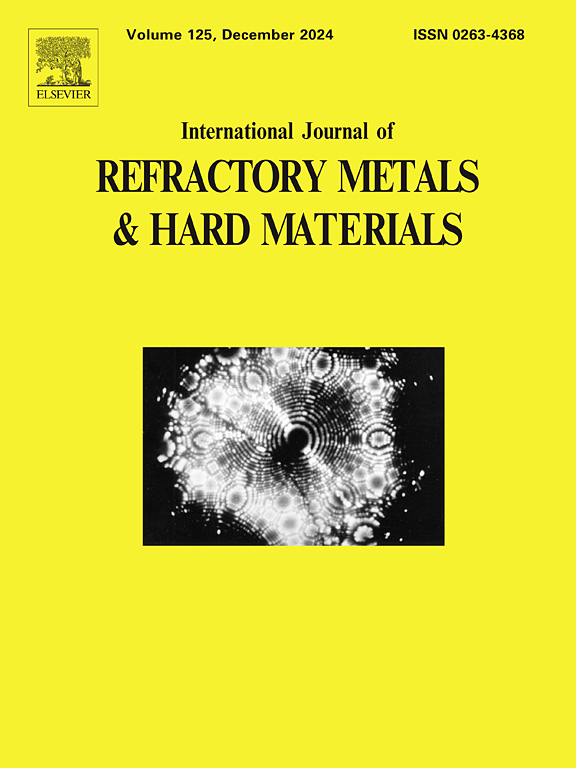Tensile behavior and microstructure evolution of Mo-14 %Re alloy at room temperature and elevated temperatures
IF 4.2
2区 材料科学
Q2 MATERIALS SCIENCE, MULTIDISCIPLINARY
International Journal of Refractory Metals & Hard Materials
Pub Date : 2024-12-02
DOI:10.1016/j.ijrmhm.2024.106996
引用次数: 0
Abstract
The present work investigates the tensile deformation behavior and fracture mechanism of Mo-14 %Re alloy (MR14) at both room and high temperatures. The results show that the tensile strength of MR14 alloy is 613 MPa at room temperature and 260 MPa at 1000 °C. Moreover, the MR14 exhibits remarkable ductility, with elongation surpassing 60 % both at ambient temperature and elevated temperatures. As the temperature rises, dynamic recrystallization and the rotation of subgrains lead to the evolution of texture during fracture, which has not been reported hitherto. A high proportion of low-angle grain boundaries (LAGBs) facilitates the dislocation transfer, thereby preventing the nucleation of cracks caused by stress concentration. The strong texture, abundant substructure, movable edge dislocation and mixed dislocation on the bundle structures are the main toughening factors. Additionally, during the high-temperature tensile deformation process, the MR14 alloy maintains a single-phase structure without precipitation, demonstrating excellent thermal stability. These research findings hold profound significance for broadening the application scope of the Mo![]() Re alloy.
Re alloy.
求助全文
约1分钟内获得全文
求助全文
来源期刊
CiteScore
7.00
自引率
13.90%
发文量
236
审稿时长
35 days
期刊介绍:
The International Journal of Refractory Metals and Hard Materials (IJRMHM) publishes original research articles concerned with all aspects of refractory metals and hard materials. Refractory metals are defined as metals with melting points higher than 1800 °C. These are tungsten, molybdenum, chromium, tantalum, niobium, hafnium, and rhenium, as well as many compounds and alloys based thereupon. Hard materials that are included in the scope of this journal are defined as materials with hardness values higher than 1000 kg/mm2, primarily intended for applications as manufacturing tools or wear resistant components in mechanical systems. Thus they encompass carbides, nitrides and borides of metals, and related compounds. A special focus of this journal is put on the family of hardmetals, which is also known as cemented tungsten carbide, and cermets which are based on titanium carbide and carbonitrides with or without a metal binder. Ceramics and superhard materials including diamond and cubic boron nitride may also be accepted provided the subject material is presented as hard materials as defined above.

 求助内容:
求助内容: 应助结果提醒方式:
应助结果提醒方式:


